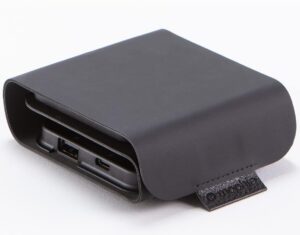Either you’re a high school student groaning at the sight of your backpack or a college student nursing the last tan lines of vacation, the end of spring break can hit hard. The shift from sun-drenched freedom back to structured days, morning alarms, and assignment deadlines is jarring—even for the most organized students.
But while the transition can feel like an emotional crash landing, there are ways to soften the reentry and regain momentum as the academic year barrels toward its final stretch.
If you’re returning to hallways or lecture halls, this guide offers strategies to ease the shift back into learning mode—and maybe even thrive in it.
Accept the Blues (and Move Through Them)
First off, it’s okay to feel a little down. The post-spring break slump is real. It’s a combination of dopamine withdrawal (from all the fun and freedom), fatigue, and the psychological weight of upcoming responsibilities like finals, projects, and graduation decisions.
Instead of fighting it, acknowledge the feeling. A temporary sense of resistance or sadness doesn’t mean you’re lazy or unmotivated—it means you had a good break. And with that energy banked, you’re actually better equipped to return strong.
Start With Small Wins
If diving headfirst into your full academic routine feels overwhelming, ease in with small victories. Organize your backpack. Check your syllabi. Update your planner or digital calendar. Respond to that one email or message from your teacher or professor you’ve been putting off.
These quick, achievable tasks rebuild your momentum and provide a sense of progress, even before you’re fully back in gear.
Reset Your Sleep Routine
Let’s be real: spring break sleep schedules are chaotic at best. Whether you were up late with friends or sleeping until noon, it’s time to readjust your internal clock.
Start by winding down earlier in the evenings—no screens 30 minutes before bed, low lighting, calming playlists or books. Then set your alarm 15–30 minutes earlier each day until you’re back on schedule. Good rest doesn’t just help you wake up—it helps with focus, memory, and emotional regulation once you’re back in class.
Reconnect with Your “Why”
Motivation dips are common after breaks. One way to reignite purpose is by revisiting your “why”—the deeper reason you’re in school in the first place. Maybe it’s a career goal, a scholarship you’re aiming for, or simply the pride of finishing strong.
Make a physical or digital vision board. Jot down a few goals for the rest of the semester—academic, personal, or social. Anchor yourself to meaning, not just tasks. It can be the difference between dragging yourself through the day and stepping back in with clarity.
Clean Up Your Space
Whether you’re in a dorm, apartment, or your childhood bedroom, your environment influences your mindset. After spring break, your room might still feel like a vacation zone—reset it into a workspace.
Tidy your desk, do laundry, toss out leftover travel gear or fast-food wrappers. Light a candle. Open a window. Create a space that supports focus and invites routine. This physical act of organizing helps mentally shift you out of vacation mode and back into structure.
Touch Base With Teachers and Classmates
If you’ve been out of communication for a week or more, it’s a good idea to reconnect with your academic circle. Ask your professors if there are any updates or materials you missed. Check in with classmates about upcoming assignments or group projects.
This shows initiative and engagement, and it also prevents small gaps from turning into bigger setbacks later. Bonus: it re-establishes your presence in the classroom, both intellectually and socially.
Break the Semester Into Bite-Sized Chunks
Facing an entire post-break semester all at once is daunting. Instead, break it down into digestible phases. For example:
- Weeks 1–2: Get re-oriented, catch up, and rebuild habits.
- Weeks 3–5: Focus on midterms or core assignments.
- Weeks 6–7: Start planning for finals or end-of-term projects.
- Final Week(s): Execute, review, and reflect.
Treat each section like its own mini-season. You’ll be surprised how much more manageable everything feels when it’s not one big blur.
Build In “Micro-Breaks” To Stay Energized
Spring break reminded your body and mind what it feels like to rest, have fun, and be in the moment. Keep that spirit alive by sprinkling micro-breaks throughout your week.
This could be:
- 10 minutes of stretching between study sessions
- A mid-week coffee with a friend
- A walk after class with music
- A Friday night movie solo or with roommates
You’re not “wasting time”—you’re restoring your capacity. And in doing so, you’re preventing burnout before it begins.
Reflect on Spring Break (Without Regret)
Instead of mourning the end of spring break, take a few minutes to reflect on what made it great. Was it the freedom? The spontaneity? The change of scenery?
Write it down—or better yet, plan your next micro-adventure, even if it’s just a weekend drive or a summer concert. Having something to look forward to keeps spirits high and reminds you that life isn’t just school—it’s cycles of effort and reward.
Finish Stronger Than You Started
The return from spring break is also the start of a countdown: to summer, graduation, promotion, or personal milestones. Use this fresh chapter as a launchpad for reinvention.
Start journaling. Take up a new hobby. Join a club. Set a fitness or academic challenge for yourself. Let this season be one where you don’t just return—you level up.
Impression
Coming off a break, the biggest trap is trying to “snap back” into perfection. But life—and school—is a rhythm, not a switch. You’re allowed to take time. You’re allowed to feel off. What matters is that you show up, piece by piece, and rebuild your flow.
So if you’re feeling the end-of-spring-break blues, know this: you’re not alone, it won’t last forever, and with the right mindset and habits, the final stretch of the school year can be your strongest yet.
No comments yet.








